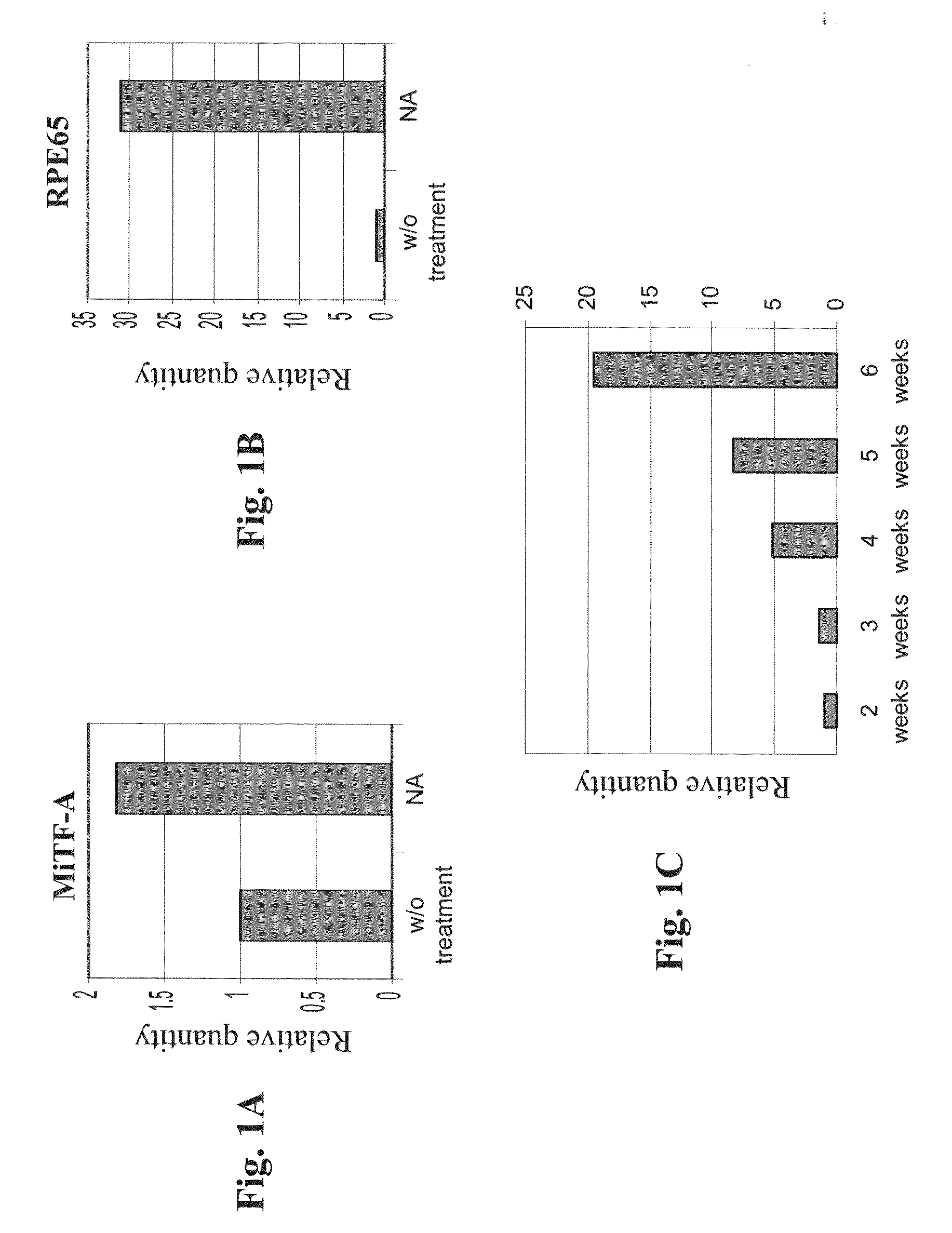Stem cell-derived retin retinal pigment epithelial cells
a technology of retinoretin and epithelial cells, which is applied in the field of stem cell-derived retinoretinoretin pigment epithelial cells, can solve the problems of low differentiation process efficiency, difficult to obtain such cells from human donors or embryos, and loss of vision and blindness, and achieve the effect of improving retinal function
- Summary
- Abstract
- Description
- Claims
- Application Information
AI Technical Summary
Benefits of technology
Problems solved by technology
Method used
Image
Examples
Embodiment Construction
[0042]The present disclosure provides the use of one or more members of the transforming growth factor-β (TGFβ) superfamily for the preparation of a culture system for promoting differentiation of human stem cells (hSCs), preferably human embryonic stem cells (hESCs) into retinal pigment epithelial (RPE) cells. It should be noted that in addition to the specified uses discussed in detailed herein, also encompassed within the present disclosure are RPE cells obtained by directed differentiation of hSCs in the presence of one or more the TGFβ superfamily; as well as a method for promoting directed differentiation of hSCs into RPE fate, as well as methods for growing and maintaining such hSCs-derived RPE cells and methods making use of such hSCs-derived RPE cells. In accordance with some preferred embodiments, the RPE cells obtained according to the teaching herein are mature (in other words, terminally differentiated) and functional RPE cells, as will be further discussed and explaine...
PUM
| Property | Measurement | Unit |
|---|---|---|
| concentrations | aaaaa | aaaaa |
| density | aaaaa | aaaaa |
| density | aaaaa | aaaaa |
Abstract
Description
Claims
Application Information
 Login to View More
Login to View More - R&D
- Intellectual Property
- Life Sciences
- Materials
- Tech Scout
- Unparalleled Data Quality
- Higher Quality Content
- 60% Fewer Hallucinations
Browse by: Latest US Patents, China's latest patents, Technical Efficacy Thesaurus, Application Domain, Technology Topic, Popular Technical Reports.
© 2025 PatSnap. All rights reserved.Legal|Privacy policy|Modern Slavery Act Transparency Statement|Sitemap|About US| Contact US: help@patsnap.com



